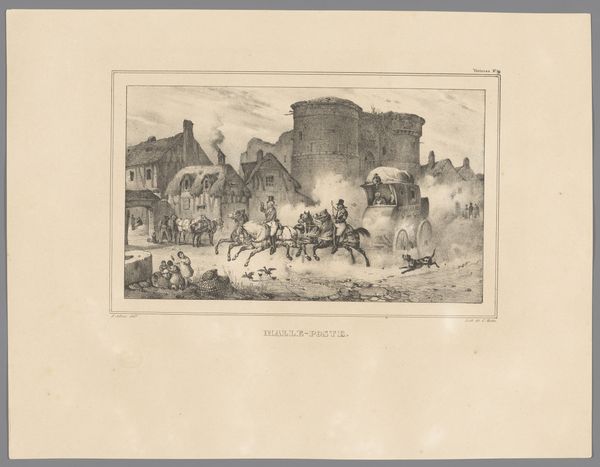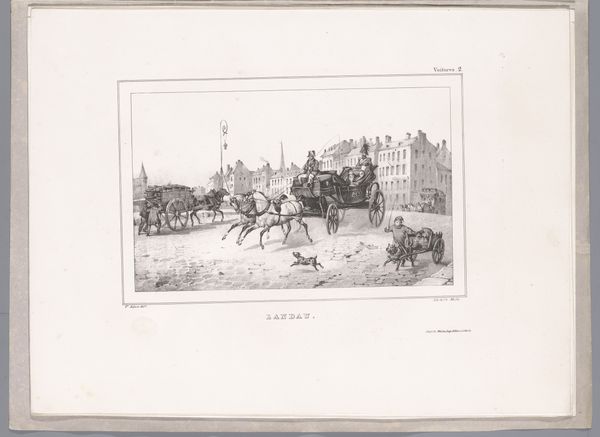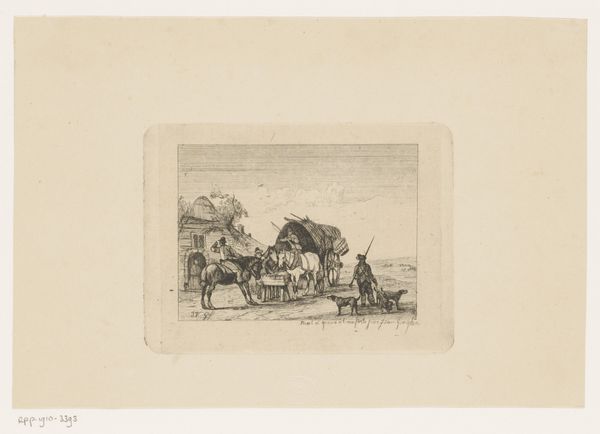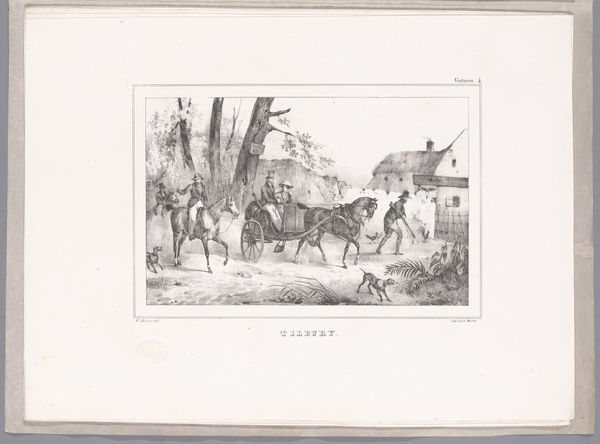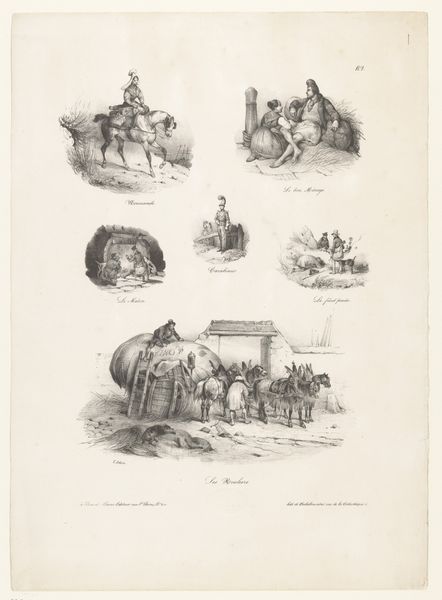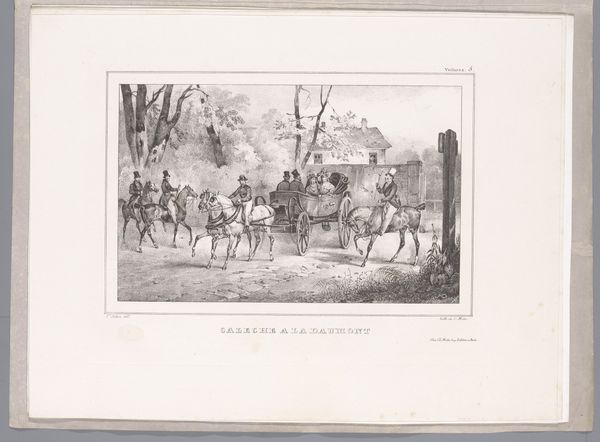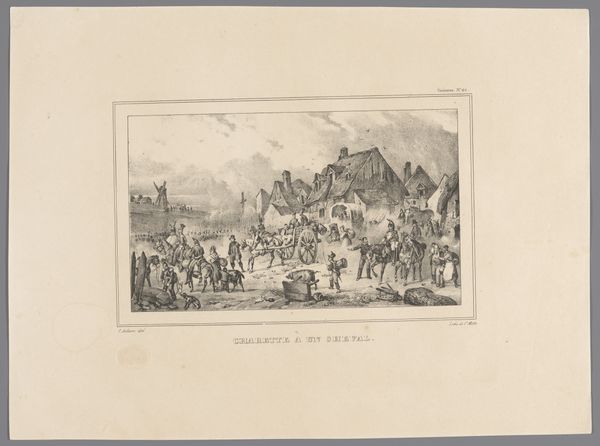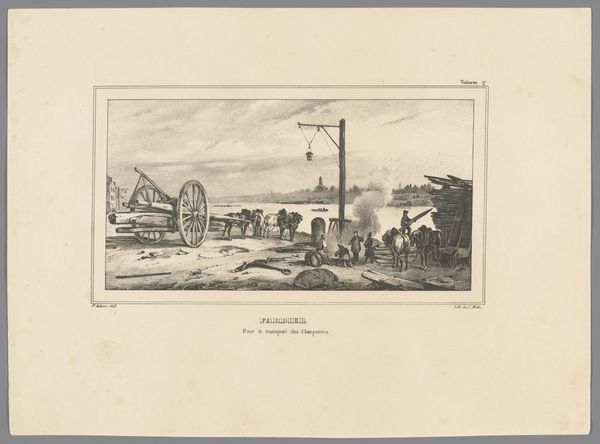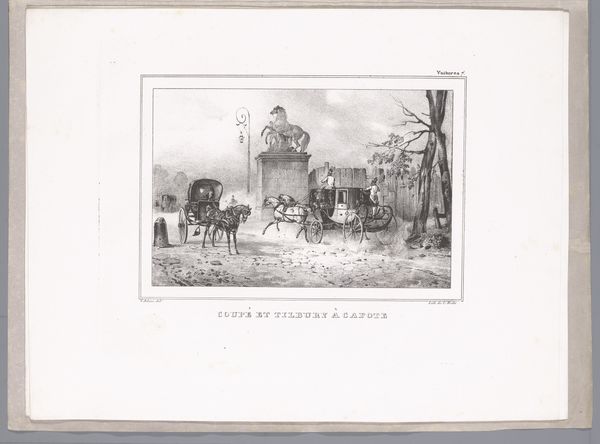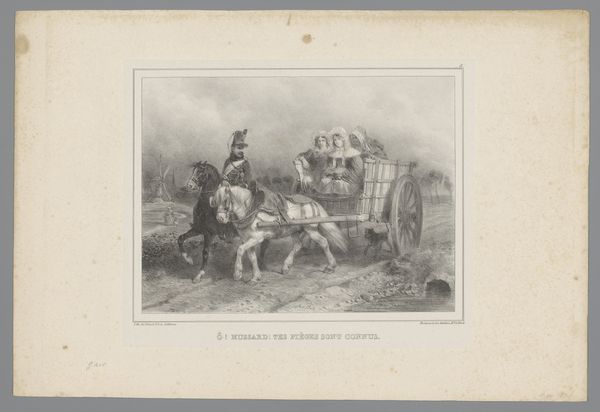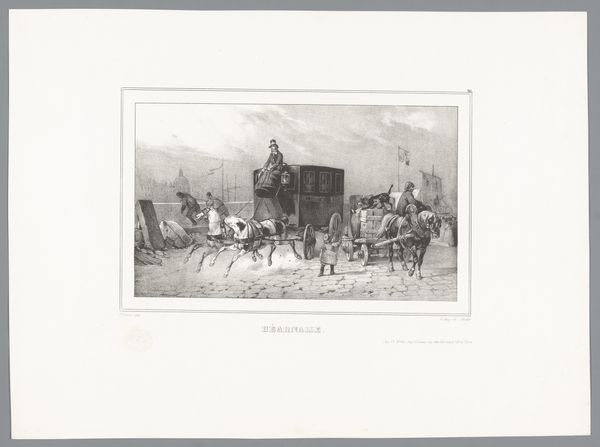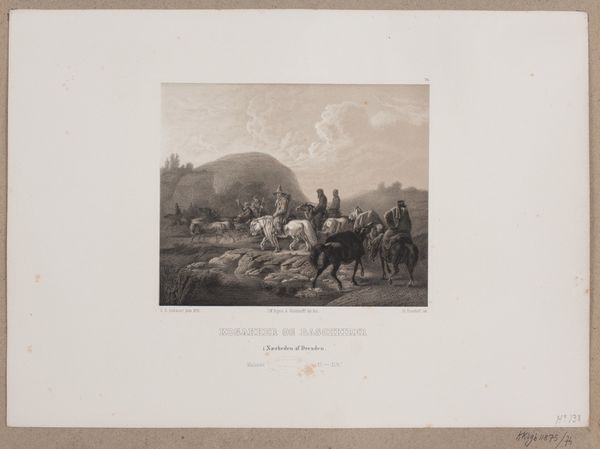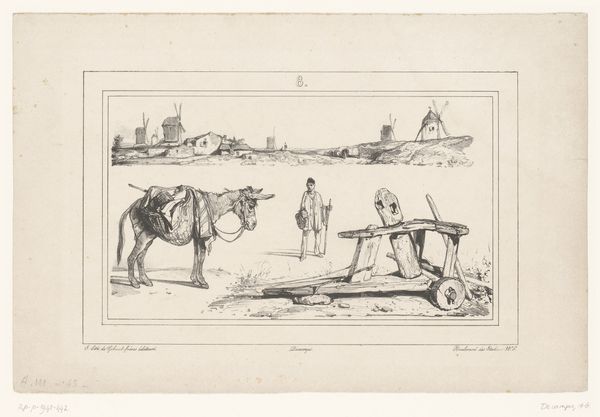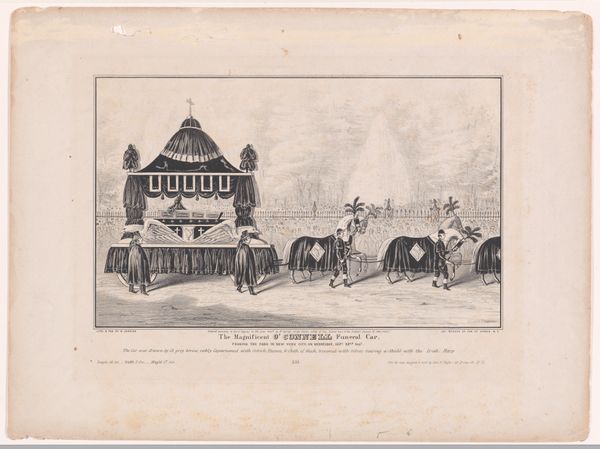
print, engraving
# print
#
landscape
#
romanticism
#
cityscape
#
genre-painting
#
engraving
Dimensions: height 264 mm, width 347 mm
Copyright: Rijks Museum: Open Domain
Editor: This engraving, "Wagen van de vilder" or "The Knacker's Cart" by Victor Adam, dates to 1828. The light seems to give the scene an almost picturesque quality, yet there's something undeniably somber about the subject matter. What do you see in this piece, especially considering its historical context? Curator: What strikes me is how this seemingly simple cityscape actually invites us to confront uncomfortable truths about urban life and social stratification in 19th-century Europe. Adam presents a scene of everyday labor, yes, but one intrinsically tied to death, waste, and social inequalities. Notice the contrast he creates between the workers, and the suggestion of wealthier urban areas. Editor: I see what you mean about the contrast. It’s there, subtly, in the architecture and implied activities in the background. Is that a conscious commentary? Curator: Absolutely. Romanticism often idealized nature, but here, we're shown the gritty reality of the city. Who are these often invisible people and what role do they play in society? It challenges us to consider our own complicity in systems that benefit some while marginalizing others. Does seeing it that way shift your perspective on the "picturesque quality" you mentioned? Editor: It does. The image is no longer just a snapshot of the past. It becomes a prompt to think about who and what we choose to look away from today. Curator: Precisely. Art becomes a tool for critical engagement, prompting us to question dominant narratives and power structures. I am hopeful for that! Editor: That's given me a whole new framework for looking at art. Thanks.
Comments
No comments
Be the first to comment and join the conversation on the ultimate creative platform.
